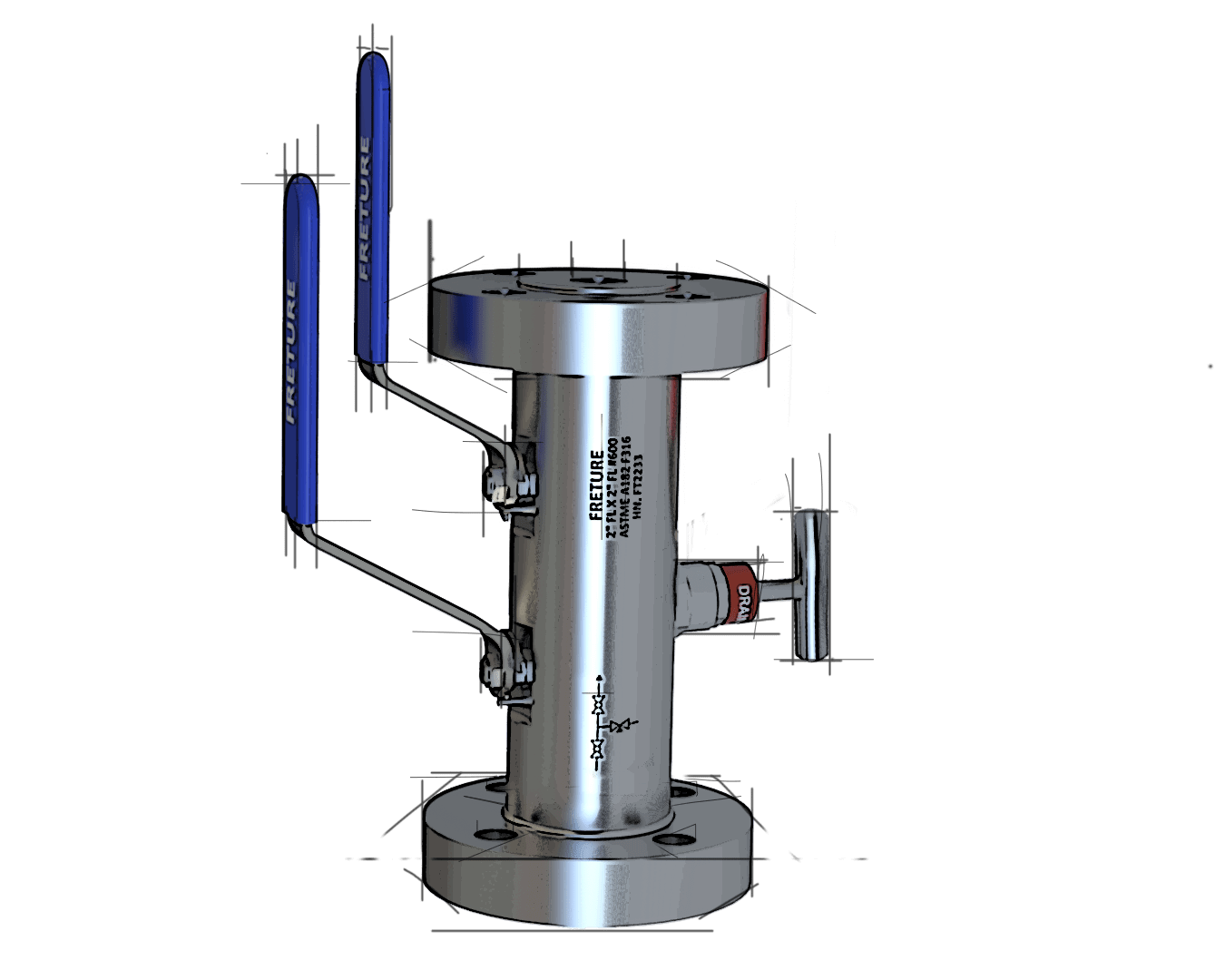Safety is the most relevant requirement within petrochemical and chemical processing facilities due to hazardous fluids, high-temperature reactions, and complex process interdependencies. Ensuring reliable isolation has become paramount for the prevention of accidental releases, hence the assuring of product purity and protection of plant personnel. In such an environment, the Double Block and Bleed Valve is one of the preferred engineering choices because it can provide controlled shutdown, verified isolation, and reduced leak paths within critical pipelines.
The DBB Valve is designed to have two independent block seats with a bleed cavity in between them. Thus, it can completely seal both the upstream and downstream sides of the pipeline. Once the two block mechanisms are closed, the central cavity can then be depressurized or drained through a bleed port. If no fluid appears at the bleed point, the isolation is considered valid. This is quite significant in chemical and petrochemical processing, since even the slightest leakage can generate hazardous exposure or process contamination.
Plants that deal with corrosive or toxic chemicals, including acids, solvents, and polymer feedstocks, require complete isolation during maintenance. The DBB valve provides technicians with a known barrier against residual pressure, thereby enabling them to work with greater assurance. Because so many chemical plants run on a near-continuous basis, most maintenance is conducted without a full plant shutdown. The assurance from the DBB valve allows partial shutdowns to be put into practice, minimizing downtime and safeguarding operational continuity.
The petrochemical industry's process safety management systems depend on sound isolation principles to prevent catastrophes. There have been numerous instances where leakages across the traditionally used multi-valve isolation assemblies, particularly at the flanged joints, have been recognized as contributors to risk. A DBB valve minimizes chances of leakage by housing within one single body two block valves and one bleed valve. This translates to fewer connections and, therefore, fewer opportunities for fugitive emissions or accidental discharge. For those plants with stringent regulatory requirements, this design assists in compliance with environmental and safety standards.
Beyond isolation, DBB valves contribute to product quality management. Various media must be kept separate in chemical processing to avoid unwanted reactions or cross-contamination in product production. The double sealing of DBB valves prevents backflow or intermixing at pipeline junctions, helping to ensure product purity. Their application is highly crucial in the manufacturing processes of high-purity chemicals, polymerisation units, reactor feed lines, and catalyst charging systems.
DBB valves are also designed to cater to the operating requirements of petrochemical plants equipped with high-temperature and high-pressure apparatus. The availability of metal-seated valves enables them to offer dependable sealing performance under conditions where soft seats fail due to thermal or abrasive stress. Other material options, including duplex stainless steel, alloy steel, and corrosion-resistant alloys, are chosen according to the nature of the process fluid. These selections ensure that the valve body and internal components maintain structural integrity throughout continuous exposure to such demanding media.
Equipment reliability is another dimension in which DBB valves add value. Because of their ability to assist in validating seat performance via the bleed cavity, they have proven to be valuable in predictive maintenance strategies. When technicians observe pressure decay or leakage at the bleed point, early intervention can be planned before a full seal failure occurs. Such predictive capability reduces the incidence of emergency shutdowns, unplanned downtime, and possible safety hazards.
Some of the practical advantages include space optimization, especially in congested pipe racks of petrochemical complexes. Since DBB valves replace several conventional valves, they reduce installation footprint and weight loads on the piping structure. This improvement simplifies engineering design, lowers fabrication costs, and minimizes risks associated with difficult-to-access connections during maintenance. From an operating point of view, DBB valves create a safer and more productive working environment. With a compact structure, reliable sealing, and an integrated verification function, they find their application in reactor isolation, tank farm lines, steam tracing systems, hazardous transfer pipelines, and utility line separation. With ever-growing demands on safety, especially in petrochemical and chemical industries around the world, the relevance of DBB valves has only appreciated. In the end, DBB valves have become essential in maintaining safety, purity, and operational integrity in petrochemical and chemical processing plants. Their double-block mechanism with a bleed verification function offers reliable isolation and reduces the possibility of accidental exposure in hazardous environments. If industries seek high-performance DBB valves for demanding chemical and petrochemical processes, Freture Techno Pvt. Ltd. provides dependable, durable, and engineered solutions.








